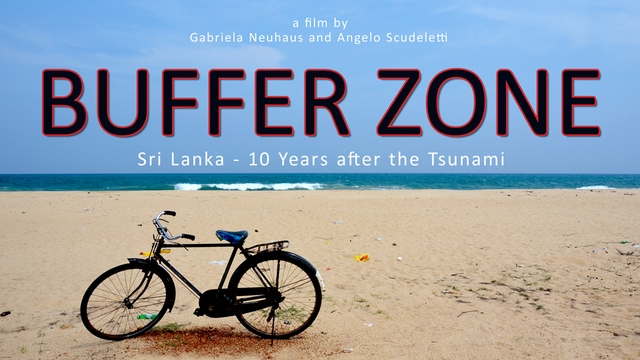Buffer Zone
An insightful look at the shoddy impact of the international community's 2004 Tsunami aid effort
 After the 2004 Boxing Day Tsunami killed 40,000 and left half a million homeless, aid agencies rushed to the rescue of Sri Lanka. Inland resettlement, funded with hundreds of millions raised in Western countries, was a welcome solution for a country living in fear of another seismic sea wave. Ten years on, cracks are appearing in the aid effort. What long term problems has this wave of humanitarian support washed up on the shores of Sri Lanka?
After the 2004 Boxing Day Tsunami killed 40,000 and left half a million homeless, aid agencies rushed to the rescue of Sri Lanka. Inland resettlement, funded with hundreds of millions raised in Western countries, was a welcome solution for a country living in fear of another seismic sea wave. Ten years on, cracks are appearing in the aid effort. What long term problems has this wave of humanitarian support washed up on the shores of Sri Lanka?
Yet the villages built by Swiss, German and Turkish organisations lie far from where many locals once successfully made a living. "There we had firewood, coconuts and fish. All for free" explains Radi, among the 70,000 who were resettled. Despite not having to fear the disastrous consequences of tsunamis, these former coastal dwellers can no longer afford their new lives. They live on frugal diets in decaying houses, and among unused facilities in fragmented communities. Has anyone truly benefited in the long term from the quick and ill-advised fixes that relief organisations provided?
While the ordinary people have only suffered over the last decade, it seems the government's tourist board have instead thrived. Where ordinary people are no longer permitted to live luxury hotels have sprung up, despite the inherent dangers. Those who refuse to be moved from Sri Lanka's idyllic beaches are beginning to feel the pressure. As one land owner says dejectedly "One day they'll most likely use violence to drive us out. When that day comes, we'll have no chance."
An insightful documentary highlighting the need for a more considered approach to international aid. LEARN MORE
WATCH MORE
JOIN THE DISCUSSION





